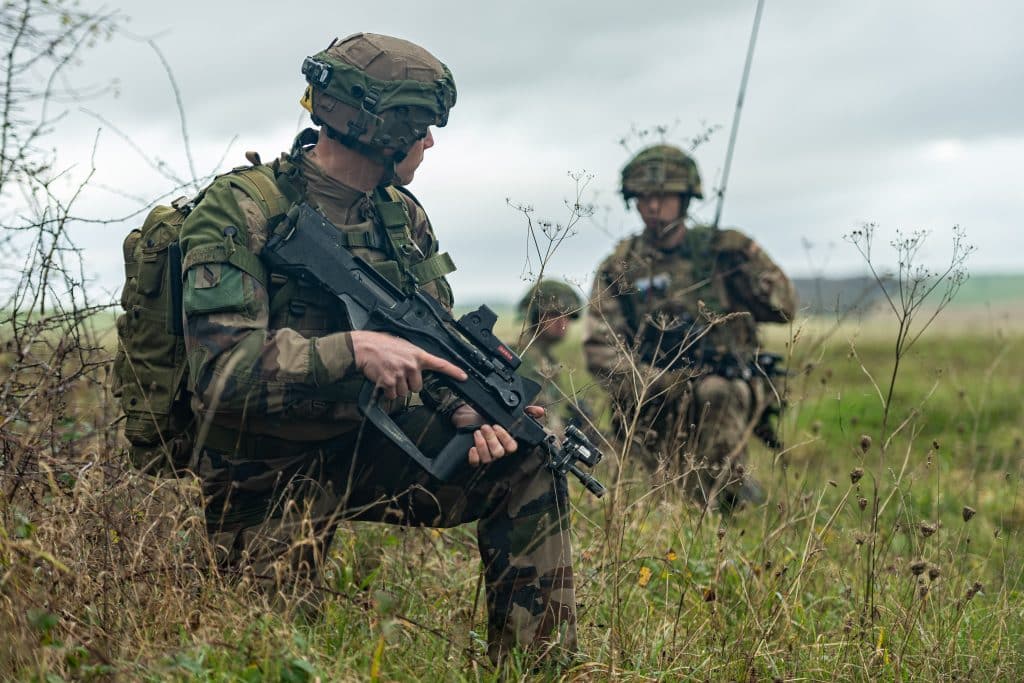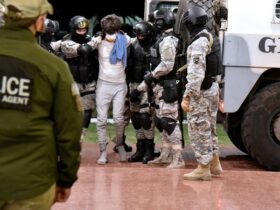The United States National Security has traditionally been preoccupied with conventional threats, including nation-states with belligerent foreign policies. However, attention has shifted toward unconventional threats in recent years. Among these is the growing concern over narco-terrorism from the Middle East, linking the illicit drug trade with terrorist activities, thereby complicating U.S. security objectives.
What is Narco-Terrorism? The term refers to the combination of narcotics trafficking and terrorism. In this relationship, terrorist organizations traffic narcotics to fund their illicit operations, allowing them to undermine state authorities, destabilize regions, and orchestrate acts of terror. The drug industry benefits from these organizations’ protection, routes, and networks.
The link that exists between the narcotics trade and terrorist organizations has been known to exist for decades. Yet, the international focus on terrorism since 9/11/01 has also increased the attention given to the phenomenon of narco-terrorism. Although traditionally a concept connected with Latin America, in contemporary policy, narco-terrorism is increasingly linked to the regions of Central and Southeast Asia, specifically the narcotics-producing regions of the so-called Golden Crescent and the Golden Triangle. (Björnehed, 2004)
The Middle East boasts prolific opium cultivation, especially in Afghanistan, contributing to global drug trafficking. This, along with protracted conflict in Syria, Iraq, and Yemen, provides a fertile ground for terror groups to exploit narcotrafficking channels for their benefit.
Narco-terrorism has escalated over the recent decades with the emergence and rise of Middle Eastern terrorist networks like Al-Qaeda, ISIS, Al Shabab, and others. These groups have reportedly exploited drug trafficking to fund their operations, demonstrating the intersection of narcotics and terrorism.
A cartel out of Venezuela called Cártel de Los Soles has worked in coordination with designated Foreign Terrorist Organizations, including the FARC, Hizballah, and Hamas. An arrest occurred in New York in May of 2020 of Adel El Zabayar for trading arms for cocaine and recruiting extremists. El Zabayar, in particular, has, among other things, participated in weapons-for-cocaine negotiations with the FARC, obtained anti-tank rocket launchers from the Middle East for the FARC as partial payment for cocaine, and recruited terrorists from Hizballah and Hamas for the purpose of helping to plan and organize attacks against United States interests. (DEA Media Relations, 2020)
For example, in or about 2014, El Zabayar participated in several meetings with Diosdado Cabello Rondón, the president of Venezuela’s National Constituent Assembly and a member of the Cártel de Los Soles, at a military base in Caracas, Venezuela. During the meetings, Cabello Rondón directed El Zabayar to travel to the Middle East to obtain weapons and recruit members of Hizballah and Hamas to train at clandestine training camps located in Venezuela. (DEA Media Relations, 2020)
How does Narco-Terrorism affect U.S. National Security?
- Funding of Terrorist Operations: The fusion of narco-trafficking and terrorism can potentially fund and fuel extremist groups, directly threatening American national security. Money generated from the drug trade fuels terrorist operations. Considering that the U.S. is a target for many radical Islamic groups in the Middle East, this poses a significant threat.
- Destabilization of the Middle East: The proliferation of narco-terrorism fuels instability in the Middle East, which indirectly but powerfully impacts the U.S. strategically. As conflicts escalate and societies destabilize, the U.S. must dedicate more economic and military resources to managing these consequential disturbances.
During a drug investigation I conducted years ago, I came across a phone number from Columbia that was in touch with the local DTO I was working on in the U.S. I subpoenaed that phone number, and it connected me with a case that was going on in Prague. I spoke to the agent that was stationed in Prague, and we compared notes. The agent’s group intercepted 1,500 Kilos of Heroin on its way to Central America. The origin country was Afghanistan.
One day, an agent approached me and showed me a video of what appeared to be large quantities of Heroin. I can tell by the Arabic the men were speaking was Syrian. The room was filled with this drug. It looked like a bunch of bags of potatoes just stacked. In Arabic, the word “Heroin” was written on each bag. From the Middle East alone, hundreds of thousands of kilos of drugs are being shipped to the US through Cartels and other DTOs in the country.
The threat to U.S. National Security from the Middle East’s narco-terrorism proceeds in several ways. First, there is the menace of the region becoming a haven for militant groups, from where they can launch terror attacks against U.S. interests globally, as happened during the 9/11 attacks. Additionally, the influx of narcotics into the U.S. catalyzes many socio-economic issues, including addiction, crime, and economic instability. Let’s look at the opioid crisis, for example. According to the CDC, synthetic opioids (like fentanyl) are the primary driver of overdose deaths in the United States. Comparison between the 12 months-ending January 31, 2020, and the 12 months-ending January 31, 2021, during this period:
- Overdose deaths involving opioids rose 38.1 percent.
- Overdose deaths involving synthetic opioids (primarily illicitly manufactured fentanyl) rose 55.6 percent and appear to be the primary driver of the increase in total drug overdose deaths. (DEA, 2021)

During my time in Iraq, I remember watching this video that was made by a Saudi Sheikh. I don’t remember his name but I do remember his message. One of the things he said is how difficult it is to bring U.S. down. He said in order to bring a giant down, you need to start from the inside. You need to hit America economically, socially, and psychologically. He did not say U.S. exactly but his description of the U.S. was implied. Ultimately, he promoted destroying the U.S. from within using drugs, sowing division, fomenting internal turmoil, and other methods. How does this tie into Narco-Terrorism? It is a form of it. It is part of the plan to cripple the U.S.
The U.S. response to narco-terrorism prompts debate about its effectiveness. Generally, the U.S. approach relies on military intervention, an approach seen in the invasion of Afghanistan, and law enforcement. This strategy has enjoyed limited success. The continued presence of narcotics and the resurgence in terrorist activities underline the need for a revised approach. (Andreas, 2018)
A possible solution is to begin a large-scale effect-based operation in which many different arms of the U.S. government and the world will have to take part in. This would be an entirely holistic approach by incorporating law enforcement, military, political, socio-economic and humanitarian responses. The responses would also involve disrupting the financial networks of these organizations and cultivating regional partnerships to promote long-term stability in the Middle East.
When considering the effects-based operations (EBO) approach to narco-terrorism in the Middle East and strengthening U.S. national security, we can analyze the potential first, second, and third-order effects. Below is an example of what this would look like:
First-order effects
The disruption of narco-terrorism networks: Through intelligence gathering, targeted operations, and cooperation with international partners, the first-order effect would be the disruption of narco-terrorism networks. This would involve arrests, seizures, and dismantling the financial infrastructure supporting these criminal organizations.
The reduction in drug trafficking: By targeting the financial networks and infrastructure of narco-terrorism, the first-order effect would also include a reduction in drug trafficking. Disrupting the flow of funds and dismantling key drug trafficking routes would hinder the ability of these organizations to operate.
Second-order effects
The weakening of terrorist organizations: As the first-order effects take hold, the second-order effects would involve the weakening of terrorist organizations linked to narco-terrorism. With their funding sources disrupted, these organizations would face challenges in sustaining their operations, recruitment, and logistical capabilities.
Enhancing regional security cooperation: As the efforts to combat narco-terrorism and strengthen national security in the Middle East progress, the second-order effect would be the fostering of enhanced regional security cooperation. Partner nations would recognize the shared threat and work together more closely, sharing intelligence, conducting joint operations, and coordinating efforts to address the issue collectively.

18 November 2020. (UK Ministry of Defence photo by Corporal Rob Kane)
Third-order effects
Improved stability in the Middle East: As the second-order effects materialize, the third-order effect would be improved stability in the Middle East. By targeting the root causes of narco-terrorism and addressing the underlying issues of drug trafficking and terrorism, greater stability can be achieved, leading to safer communities and stronger institutions.
Strengthened US national security: The third-order effect also includes a strengthened US national security. As the efforts to disrupt narco-terrorism networks succeed, the threat to the homeland and US interests abroad would diminish. This would enhance the security of the United States, its citizens, and its assets, both domestically and overseas.
It is important to note that these effects are interconnected and can overlap. The success of each order of effects contributes to the overall effectiveness of the EBO approach in combating narco-terrorism and strengthening national security.
In conclusion, the narco-terrorism from the Middle East presents a multifaceted and complex threat to U.S. national security. Approaching this issue requires a thorough understanding of its origins, implications, and potential interventions. Beyond military action and law enforcement, the U.S. needs to adopt a strategic policy that addresses the root causes of narco-terrorism. This involves recognizing the interlinks between the narcotics trade and terrorism, culminating in a comprehensive and context-specific solution.
References
Andreas, P. (2018). Drugs and War: What Is the Relationship? Annual Review. https://doi.org/10.1146/annurev-polisci-051017-
Björnehed, E. (2004). Narco-Terrorism: The Merger of the War on Drugs and the War on Terror. Global Crime, 6(3-4), 305–324. https://doi.org/10.1080/17440570500273440
DEA. (2021, April 29). Facts about Fentanyl. Www.dea.gov. https://www.dea.gov/resources/facts-about-fentanyl
DEA Media Relations. (2020). Former member of Venezuelan National Assembly charged with narco-terrorism, drug trafficking and weapons offenses. DEA. https://www.dea.gov/press-releases/2020/05/27/former-member-venezuelan-national-assembly-charged-narco-terrorism-drug
Felbab-Brown, V. (2020, October 29). Drugs, Security, and Counternarcotics policies in Afghanistan. Brookings. https://www.brookings.edu/articles/drugs-security-and-counternarcotics-policies-in-afghanistan/
Haupt, D. (2009, June 2). NARCO-TERRORISM: An increasing threat to U.S. National Security. Joint Advanced Warfighting School. https://apps.dtic.mil/sti/pdfs/ADA530126.pdf
Ayman Kafel is the founder and owner of Hybrid Wolf Blue Line Strategies, LLC. A veteran-owned training and consulting company for Law Enforcement officers and agencies. He combines his military and law enforcement experience to bring much-needed cutting-edge training to the law enforcement profession.
Ayman is not only an active police officer but also a law enforcement instructor and has taught across the East Coast of the United States. He offers a wide variety of training, such as advanced patrol tactics, mechanical breaching courses, designated marksman, and Human Performance under duress.
In addition, Ayman is an Army Combat Veteran who was deployed during Operation Iraqi Freedom in 2005. He became a police officer in 2007 after 8 years of service in the Army
Ayman has seen the ugliness of war and evil in the world. He survived two civil wars prior to immigrating to the United States in the late eighties.
His current position is the commander of his department’s Problem-Oriented Policing Unit. He leads a team of investigators that employs unconventional methods and Special Forces philosophy in achieving specific objectives in the communities he serves. These unconventional methods range from winning hearts and minds to specific strategic law enforcement actions to arrest and prosecute those who are the root cause of various crimes.
To reach Ayman, feel free to email him at hwbluelinestrategies@gmail.com
As the Voice of the Veteran Community, The Havok Journal seeks to publish a variety of perspectives on a number of sensitive subjects. Unless specifically noted otherwise, nothing we publish is an official point of view of The Havok Journal or any part of the U.S. government.
© 2023 The Havok Journal
The Havok Journal welcomes re-posting of our original content as long as it is done in compliance with our Terms of Use.










Leave a Reply